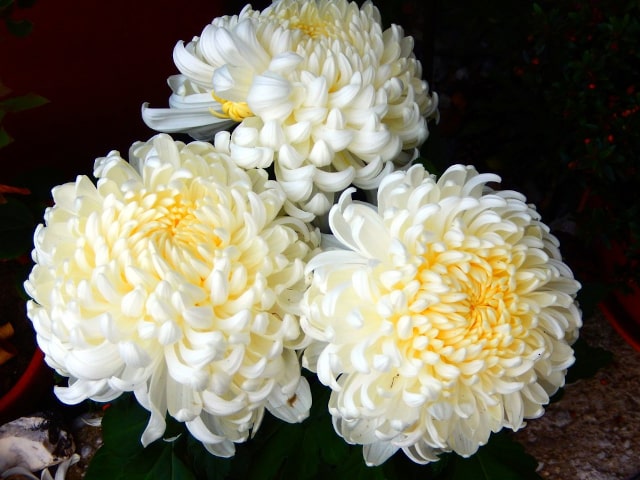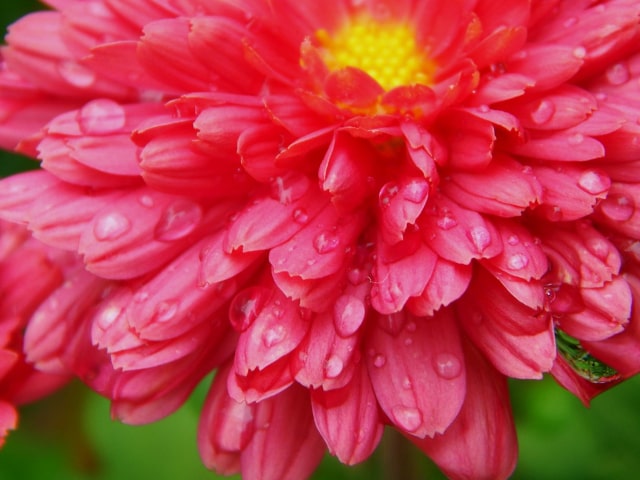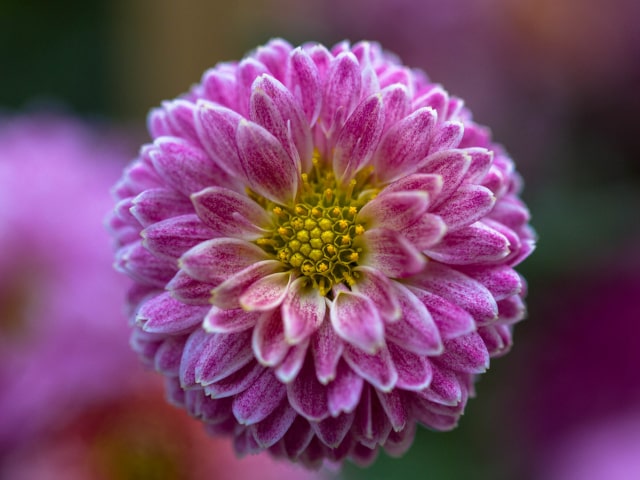
Many people like to grow Chrysanthemums in their gardens, but you may also grow them indoors in pots. These plants can thrive when potted and this can be an excellent way to protect them from frost and other harsh winter conditions. Growing these plants in pots is not difficult at all so even beginner gardeners can do it without problem.
Why Growing Chrysanthemums in Pots?
Chrysanthemums look great on patios, terraces and balconies. Their flowers can brighten up your facade and make your home look more colorful. These plants can also be grown indoors, where they provide color to the room.
Keep in mind that these plants are often grown as annuals. In order to grow them as perennials, you need to have an appropriate variety. Growing them in the ground is only possible with these specific varieties. These are the ones that are resistant or semi-resistant to frost. These varieties have small or medium-sized flowers.
For many other varieties, you will need to grow Chrysanthemums in pots. They will simply not be able to survive the winter otherwise. If you keep them in pots you can simply take the pots indoors when the temperatures become too low and the frost develops. This is by far the number one reason why people choose to grow Chrysanthemums as potted plants.
Here are some tips on how to grow Chrysanthemums in pots.
Planting Your Chrysanthemums
Chrysanthemums are very easy to grow so even novice gardeners can do it without much problems. These plants are not demanding when it comes to soil conditions so it is very easy to make them thrive.
You should start by planting your Chrysanthemum in a pot. Make sure to plant them at the same depth as their previous pot. Make sure that the soil is well drained and loamy. It should have a good texture and aeration. You can improve the soil's quality and conditions by adding a bit of compost or other organic matter to the mix.
After you plant the Chrysanthemums, make sure to water them generously for a few weeks. This will help your Chrysanthemums get established well.
For the best results, position your Chrysanthemums at a clear and sunny spot in your home, balcony, patio, terrace or another place. It doesn't matter if it's indoors or outdoors as long as it is clear and sunny. When positioning the pots make sure not to make them too cluttered. This is bad for Chrysanthemums since they require proper air flow to grow.
Caring for Chrysanthemums in Pots
Once you have planted your Chrysanthemums, you need to take care of them. Make sure to water them regularly. Water so the soil is kept slightly moist but never wet. It is important that he pot has good drainage holes so your plants do not sit in water.
Make sure to water often. Keep in mind that Chrysanthemums have a shallow root system so they dry up very fast. This is why you need to water them often. At the same time, make sure not to over-water: they should not sit in water.
It is important to add some fertilizer to promote healthy roots and to help with bud development. The fertilizer will make a more vigorous plant. It is vital to add fertilizer before the flower buds form. You can either use 12-6-6 slow release fertilizer in the beginning of the growing season or 15-15-15 liquid fertilizer. Make sure to use any fertilizer strictly according to the manufacturer's instructions.
Additional Tips
Here are some additional tips for growing Chrysanthemums in pots:
- Whenever you notice a faded flower, remove it. Make sure to do it gently. Removing faded flowers will encourage the plant to develop more blooms.
- You should always prune dead branches and discolored leaves.
- Pinch your Chrysanthemum from time to time to encourage the flower growth and to make your plant bushier.
- Chrysanthemums are susceptible to certain diseases, such as grey mold, powdery mildew and root rot. Keep this in mind and monitor your plants to notice any potential changes.
- These plants can be victims of certain pests, most commonly leaf and stem miners, aphids, Chrysanthemum eel worm, caterpillars and worms. Monitor your plant and treat any potential pest infection immediately.
Photo credit: weichen_kh




4 Comments
Please tell me what size pot to use and how many plants per pot?
Thanks
How do you care for pots in winter? Can you keep in unheated garage when outside temperature could be 40 to 20 degrees..? Sometimes 0 degrees.
What size pot for Geraniums Rachael?
Why nobody tells us what is the ideal container size for Chrysanthemums? I mean, the depth and the diameter. Please, do so. I have read 20 google results already. None of them says how to pick the right pot / container. Thanks!